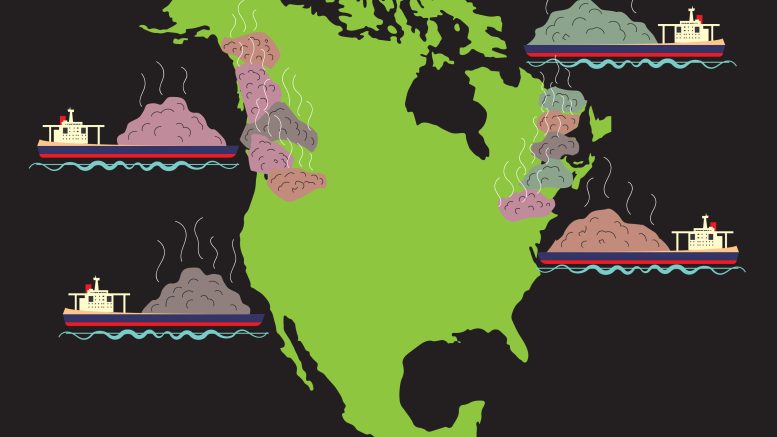Plastics are consuming the world and the issue is getting worse, not better. After two world wars, thrift and reuse in the North American economy had become a regular practice. The wars encouraged recycling efforts as a means to save in-demand materials for the military. For example, the bottling industry was remarkably efficient at recycling containers at low cost. The bottles were hand stamped by the company producing them to mark ownership and the business would use a deposit-refund system to ensure consumers returned the bottles after consumption. They were consistently cleaned, refilled, capped and returned to the market after use.
Although the industry was efficient and sustainable, it was also difficult to grow — for many politicians and economists at the time, that was a problem. As a result, plastic production was a useful solution for the packaging industry’s stagnation.
Editor of U.S. magazine Modern Packaging Lloyd Stouffer famously said in 1956 while addressing the Society of the Plastics Industry conference in New York, “The future of plastics is in the trash can […] It [is] time for the plastics industry to stop thinking about ‘reuse’ packages and concentrate on single use. For the package that is used once and thrown away, like a tin can or a paper carton, represents not a one-shot market for a few thousand units, but an everyday recurring market measured by the billions of units.”
Stouffer saw plastic use as a never-ending source for profit in the packaging industry and his speech in New York has been etched in gold since single-use plastics ascended to the dirty throne. Now, Canada’s packaging sector accounts for 33 per cent of total demand in plastic production, dwarfing the construction and automotive sectors.
With the rise of single-use plastics, the problem about where to put them post-consumption followed. Only about 10 per cent of Canada’s annual plastic waste is diverted from landfills and even less is recycled. So, where does the other 90 per cent go? A good portion of it is dumped into the environment where it concentrates into microplastics that adversely affect the health of the land.
In Canada, environmental laws are regulated by a permission-to-pollute system that sets abstract thresholds for the land’s assimilative capacity — a term used to indicate how much industries can pollute before it causes damage to the land, water or air. These views of the land reduce it to a resource meant to be exploited by the ambitions of industry, not the continuity of ecological health.
These same thresholds are the ones destroying the health of communities lining the Athabasca River downstream from the oilsands in Alberta. Tailings ponds holding toxic carcinogenic minerals like arsenic are leaking into the river, elevating cancer rates in Indigenous communities. According to Canadian regulations, arsenic levels in the Athabasca River are reportedly normal, but the line between normal and dangerous is difficult to tell. Health Canada notes that 0.010 milligrams of arsenic per litre of drinking water is safe — however, a level of 0.011 milligrams is apparently dangerous.
Worse yet, a lot of Canada’s waste is shipped away to economically subjugated nations with less environmental regulations. Canada and corporations operating within its borders often pay these nations or other waste disposal companies to manage the issue for them. This waste is often burnt or dumped with little regard for local populations.
In 2019, the world watched after the Philippines threatened to send 60 containers of household waste back to Canada. Officials claimed that over 103 containers were sent to the Philippines between 2013 and 2014. Many containers were disposed, but the 69 containers shipped back were filled with dirty diapers, household waste and hazardous electronic waste and were forced to rot on the ports for years after the company that shipped the contents falsely labelled them as recyclables.
Whether we degrade Indigenous lands on our own continent or ship waste out of the sight of settlers’ view, both methods are colonialism in action. The ever-expanding production of plastics means that more and more land will need to be exploited for the products of our very consumption, simply as a means to discard them. In many ways, colonialism is like a snake eating its own tail.
As geographer Max Liboiron claims in their new book Pollution is Colonialism, “Whether motivated by profit and growth or environmental conservation, both approaches to waste and wasting are premised on an assumed entitlement to Indigenous Land.”
Canada’s waste policies are textbook examples of colonialism. The reason our cities aren’t overflowing with plastics and waste is primarily because they are shipped away from our sight. However, this doesn’t mean they don’t exist — it just means land elsewhere is being expropriated to make room for settlers’ ambitions.


